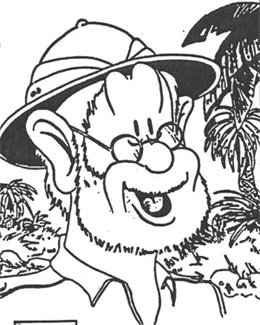The Supreme Court of Canada last week, in
Cinar Corp. v. Robinson, legitimized the creative act of amalgamating ideas within the public domain. The ruling extends copyright protections for artists and resolves some tricky issues around infringement.
As it addressed so many issues, IP lawyer Barry Sookman noted in a
blog post about the ruling, “For

copyright lawyers, this case is a goldmine – a treasure trove -of important copyright holdings by the Supreme Court.”
He notes the case is “an important precedent dealing with many other core areas of copyright including the framework for how to assess if a ‘substantial part’ of a work has been reproduced, the assessment of damages for infringement including accounting of profits, non-pecuniary damages and punitive damages, the use of experts in a copyright case, the vicarious liability of directors for infringement, and whether copyright is protected by the Quebec Charter of human rights and freedoms.”
The appeal is an old one, stemming from an instance of infringement by the Quebec-based, now-defunct animation studio Cinar Corp. It’s already been appealed to the SCC four times. The respondent, Claude Robinson, claimed Cinar’s Ron Weinberg and the late Micheline Charest, as well as executives at France Animation S.A., stole his idea for a kids’ show inspired by Robinson Crusoe.
The show Robinson pitched,
The Adventures of Robinson Curiosity, was rejected in 1987. Then, eight years later, Cinar came out with its own show,
Robinson Sucroë. The plaintiff felt it was a blatant rip-off of his show, and filed suit against Weinberg, Charest, Cinar and, other people and companies behind the new program.
The trial judge sided with Robinson, ruling the defendants had violated their obligation of good faith and loyalty and were liable for infringement, awarding $10.4 million. The Quebec Court of Appeal agreed with these findings in almost every instance, but reduced the overall awards by $1.6 million.
In a judgment written by Chief Justice Beverley McLachlin, the Supreme Court upheld the infringement ruling against the appellants, and partially allowed a cross-appeal by Robinson to reinstate damages excluded by the appeal court.
In the case, the court weighed the need to protect artistic creators against the need to protect the public domain from proprietary claims.
The Cinar appellants argued the trial judge erred in comparing
Robinson Sucroë holistically to
The Adventures of Robinson Curiosity. In their opinion, the judge should have “weeded out” any ideas already within the public domain, and based any decision solely on instances of infringement for original ideas.
The Supreme Court rejected this notion unanimously, granting creative merit to the act of combining elements and ideas within the public domain:
“[The appellants’] approach focuses unduly on whether each of the parts of R’s work is individually original and protected by copyright law. Rather, the cumulative effect of the features copied from the work must be considered, to determine whether those features amount to a substantial part of R’s skill and judgement expressed in his work as a whole.”
The court also reasoned that simply altering the features of someone else’s work was not a sufficient means to avoid a claim of infringement, if there’s evidence of where the original idea came from:
“The alteration of copied features or their integration into a work that is notably different from the plaintiff’s work does not necessarily preclude a claim that a substantial part of a work has been copied.”
Another interesting wrinkle was the acceptance of expert testimony. Cinar had argued this kind of testimony was inadmissible in a copyright case, given the infringement must be judged from the perspective of a lay person.
McLachlin writes while the lay perspective is useful, it is not overriding:
“In some cases, it may be necessary to go beyond the perspective of a lay person in the intended audience for the work, and to call upon an expert to place the trial judge in the shoes of someone reasonably versed in the relevant art or technology. In the present case, the necessity criterion of the test for the admissibility of expert evidence is satisfied.”
In allowing Robinson’s cross-appeal, the court also recalculated costs and damages, returning some, but not all, of the awards stripped away by the appeal court.

 copyright lawyers, this case is a goldmine – a treasure trove -of important copyright holdings by the Supreme Court.”
copyright lawyers, this case is a goldmine – a treasure trove -of important copyright holdings by the Supreme Court.”